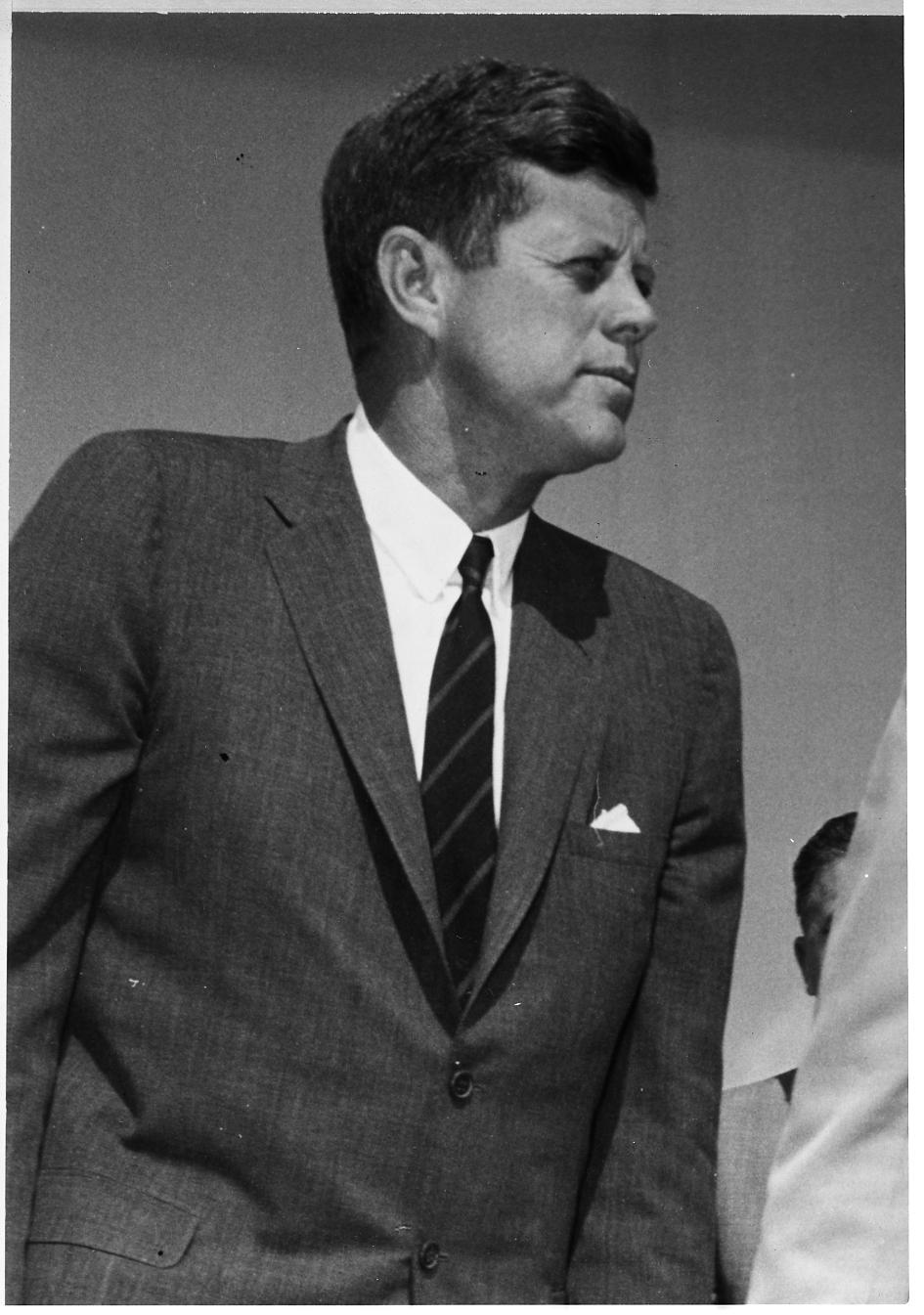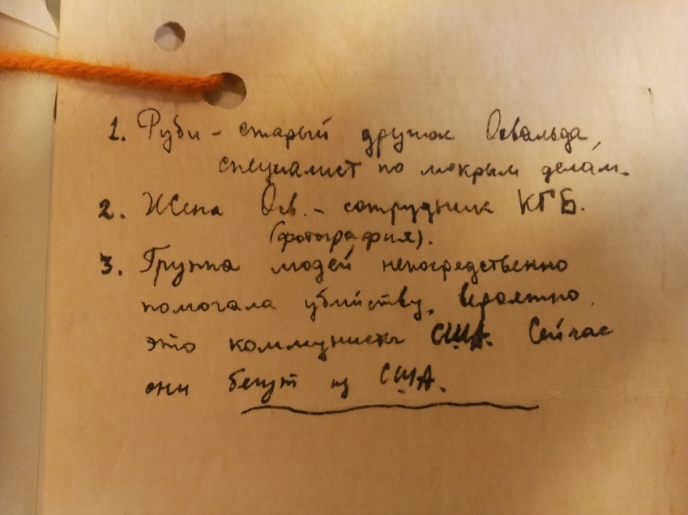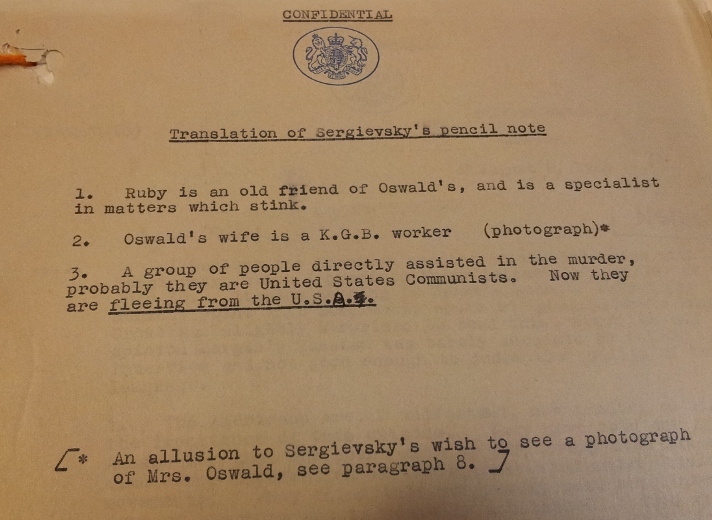It is perhaps no exaggeration to say that few historical events have been the subject of as much speculation and controversy as the assassination of President John F. Kennedy in Dallas, Texas, 50 years ago today.
By one recent estimate, there have been as many as 40,000 books on the subject, in addition to several lengthy official investigations. Our counterparts at the US National Archives have a dedicated collection of assassination-related material which contains more than 5 million pages of records as well as photos, motion pictures, sound recordings and artefacts. All but a tiny proportion (around one per cent) are open to the public and even these should be released by 2017.
Our own collection of JFK-related records does not approach anything like that scale, but we do have an interesting selection of documents including PREM 11/4582 which is now available to view online for the first time.
The documents in the file vividly illustrate the sense of shock experienced by the political establishment on this side of the Atlantic. A draft of the Prime Minister’s address to the nation begins: ‘You have heard the dreadful news. I find it almost impossible…to accept the fact that President Kennedy is dead’. Harold and Dorothy Macmillan’s personal message to Mrs Kennedy is equally stark: ‘We are numbed by the shock of Jack’s death. Nothing we can say can console you’. The file also contains Foreign Office reports of reaction from around the world and arrangements for British representation at the President’s funeral in Washington DC and the memorial service at St Paul’s Cathedral.
Another file in the same series which is available in the reading rooms, PREM 11/4408, contains details of the guidance issued by the British Embassy in Washington, DC in the aftermath of the assassination. It specifies the use of ‘black-edged stationery’ for all formal correspondence within the United States throughout the seven-day period of mourning ordered by the Queen.
A degree of confusion in the early days after the assassination was perhaps inevitable given the rapid sequence of events. Kennedy was killed on 22 November and his alleged assassin, Lee Harvey Oswald, was shot by Jack Ruby just two days later. In FO 953/2109, we learn that the BBC contacted the Foreign Office to ask for guidance on countering Russian propaganda alleging the crime was the work of ‘Right Wing’ elements in the United States and the murder of Oswald part of a ‘cover–up’. Writing to the British Embassy in Washington, one Foreign Office official put it like this: ‘Obviously this is the $64,000 question, and the BBC are not the only people requiring guidance on it.’ The Embassy’s reply noted a ‘recent shift in the line being taken by the Russians’ from blaming a ‘Right Wing conspiracy’ to pinning it on a ‘Trotskyite conspiracy’. J. E Killick at the Embassy wrote back to London: ‘The American line on this is to decry the proposition that this was a planned Right Wing or racist operation. In rebutting this propaganda they are relying, in the words of the State Department, ‘on the facts’. These ‘facts’ (although we shall now probably never be able to verify them fully) are that the assassination was the work of a demented individual acting on his own initiative, and not at the prompting of any organised group…I hope that this indication of American thinking will be of some help to the BBC’.
Other notable Foreign Office files to deal with the assassination include FO 371/168488 which contains the British Ambassador to Washington, David Ormsby-Gore’s vivid account of events from 22 November to 25 November: assassination to burial. Concluding his letter to the Foreign Secretary, Rab Butler, he wrote: ‘There can be no doubt that the loss to us all is great. It is difficult to seek and find in it anything good, but if it serves to shock the American people into the sober realisation of the need to resolve peacefully their racial and political differences, there will be some consolation’.
Perhaps more interesting though is a report from on the ground by C.P Hope of the British-Consulate General in Houston, Texas. He notes the ‘appalling inefficiency of the Dallas Police at every stage’ but praises the media for showing restraint. In a phrase that still resonates, he wrote: ‘Lack of knowledge immediately gave rise to rumours of every description and of the wildest kind’. He went on: ‘The John Birch Society, the Communists, the Protestants and even negroes were all blamed in turn for the President’s murder and Dallas was on the verge of a city wide witch hunt’.
However, those of a conspiratorial bent might find FO 371/177728 the most interesting file of all. In July 1964, a Soviet citizen named Konstantin Petrovich Sergievsky walked into the British Embassy in Moscow claiming to have important information about Kennedy’s assassination. Sergievsky was interviewed by Brian Crowe, an official at the British Embassy, and an officer from the American Embassy. His story was incredible. He claimed to have met Oswald in Gorky in 1960 and to have been told about a plan to assassinate the US President, who at the time was Dwight Eisenhower. Oswald, he told them, had the ‘persecuted look’ of a ‘madman’ which convinced Sergievsky he’d undergone some sort of ‘brainwashing’ by the KGB which may have included a form of ‘semi hypnosis’ induced by smoking ‘opium cigarettes’. Sergievsky walked into the Embassy carrying a scrap of paper, a copy of which is in the file, with the three points he wished to make written out in pencil in Russian script:
It’s easy to see why the whole episode caused such nervousness among British officials. Even if he was a ‘crank’, as they suspected, the incident, having being made known to the Americans, might find its way into the official Warren Commission report into the assassination and result in a great deal of unwanted press attention. In a telegram dated 14 September 1964, just weeks before the publication of the Commission’s report, the Foreign Office told its Embassy in Washington that although they could ‘hardly urge the Warren Commission to omit this ‘evidence” it was ‘essential’ to avoid ‘anything that might suggest that Her Majesty’s Embassy were involved in the interview [with Sergievsky] in any way’ and to refrain from ‘saying anything which involves us’ to the press. Later reports from Washington suggested Crowe’s report would be included but ‘relegated to an annex to the report where it should attract little attention’. Even this prospect caused considerable unease. In the end, the Foreign Office needn’t have worried. The whole episode was removed from the Commission’s report, apparently at the last minute, on the advice of the US State Department. ‘All’s well that end’s well’, as Mr Killick put it in a letter to the Foreign Office on 29 September 1964. The full, strange story didn’t resurface until the file was released in 1995.



Thanks Tommy,
It is interesting to note that a file on Sergievsky (why go to the British Embassy?) is one of those with-held by the American authorities until 2017, but the Warren Commission inquiry is widely seen as being a whitewash and the political effects of finding any Soviet involvement would have been immense at the height of the Cold War. The effect of Kennedy’s assassination led to the British Government passing legislation for the creation of a JFK Memorial site at Runnymede (see T 179). The views of the Foreign Office seem short-sighted as it only heightened the view of a ‘cover-up’, an issue which still covers the present whenever governments have an inquiry.
Thanks David. According to the file, Sergievsky was unable to gain access to the American Embassy in Moscow because it was ‘too well guarded’ but he was able to slip inside the an unguarded gate to the British Embassy. Once there, the British Embassy staff contacted the Americans who sent an officer down for the interview. Can you tell me where you discovered that a file on Sergievsky was among the ‘sealed’ files? I was not aware of that, how interesting. Tommy
Tommy,
I found the reference at:-
http://www.whokilledjfk.net/here_are_withheld_information_th.htm (see State 1378 in the list) near the bottom. It seems that some of the files may be closed for longer periods.
just wanted to say that there has NOT been 40,000
books written on the JFK Assassination….it’s more like
as of 2014, around 3000, maybe a little more, maybe a
little less….perhaps the original draft of the scenario
that was drawn up, finally and ultimately approved upon and subsequently carried out and brought to fruition may be a sizable volume, and also I am sure that the benefactors and authors of this horrendous act most probably have in storage some where their own multi- volume narrative and “description” of events showing “their own” how, who and why in order to someday for future generations to “explain”, “justify” and say “why” ….traitors on this level or levels
I am sure keep records…just as if … if they were on the
receiving/loosing end and were discovered…
momentum, luck, skill and secrecy….
the four corners of a covert enterprise, be it a Pearl
Harbor on 12/7/41, Operation Valkryie on 7/20/44 or the Murder of JFK Nov. 22, 1963…
even the Nazis & The SS under Hitler and The NKVD/KGB under Stalin kept records !!!
david t. krall
email: truthatlarge@hotmail.com